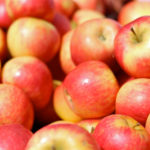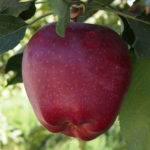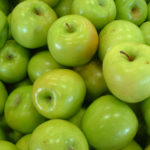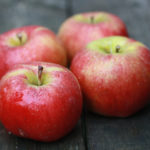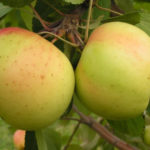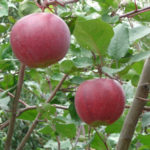Apple variety Liberty
Without exaggeration, the apple tree is the most popular tree in the gardens of Russia and some post-Soviet states, as well as in Europe and America. Moreover, the migration of varieties occurs constantly. So, in the mid-80s, Liberty saplings came to our country from overseas, more precisely from America. This variety appeared in 1955 as a result of crossing the famous Mac and Welsey, and less well-known in our country Mecount and Rum Beauty. The seedling PR 154-12 was responsible for the immunity. In 2000, the variety was entered into the State Register. The area of admission is the North Caucasian region, although the culture is considered promising for Polesie, central and northeastern Forest-steppe and Donbass.
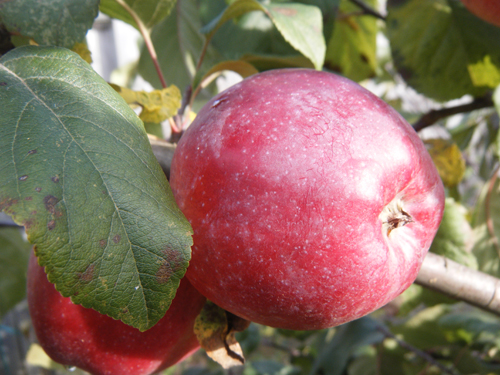
Description
At a young age, the tree grows very quickly, then the shoot-forming ability subsides somewhat. As a result, the apple tree grows up to 2.5 meters, sometimes just over 3 meters. The plant is decorated with a rounded and not too dense crown. Skeletal branches branch off at an angle of 45 - 65 °. Shoots are medium, painted in a carmine-red hue. The leaf blade is rounded, with a smooth surface, rich green color. The crop is formed on spears and ringlets. Excitability of the kidneys is average. Abundant and friendly flowering of the apple tree occurs in mid-May. The calyx of the Liberty flower is small, the petals are white with a pale pink tint.
The fruits of the variety are one-dimensional, round-conical in shape. The usual weight is 130 - 140 grams. The main color is yellowish green. It is almost completely covered by a blurred intense blush of a dark burgundy color with a slight bluish waxy coating. Against this background, the subcutaneous points are clearly visible. The apple skin is not too thick, elastic, dense, glossy shiny. The saucer is not too wide, deep. The calyx is medium in size, mostly closed. The sub-cup cavity (tube) is thin, connected to the seminal cavity. The funnel is slightly narrow and deep, it can be yellow-green in color with traces of rusting. The peduncle is short. In the middle there is a leathery 4 or 5-chambered seed cavity. The pulp is light yellow-green or creamy in color, medium density, crispy, tender, juicy and aromatic. The consistency is fine-grained. Liberty's taste is harmonious, sweet and sour, refreshing. Assessment of tasters 4.0 - 4.2 points.

Variety characteristics
- The apple tree is early winter. Technical ripeness occurs in mid-September. But immediately after harvesting, the fruits are harsh. The stage of consumer maturity will come only at the end of October;
- at the time of fruiting it enters quite quickly (already in the second year) and is famous for its excellent yield, increasing over the years. On the correct rootstock, a 3 - 4-year-old tree bears 6 - 13 kg of fruit, a 7-year-old - 38 - 42 kg, a 9-year-old tree - 65 - 123 kg;
- on a medium-sized rootstock, the variety is able to show the best performance potential;
- fruiting is stable, annual;
- winter hardiness and drought resistance are average, which is quite suitable for growing regions;
- The Liberty apple tree has the Vf gene, which makes it absolutely scab resistant. Applicants also point to a high resistance to rust and monilial burn. The cultivar can get sick with powdery mildew;

- good portability;
- fruits lie in storage for 2 months, in special refrigerating chambers - up to 5 months. If the storage standards are not followed, they may be affected by the browning of the core, while the appearance of a sick fetus will not differ from a healthy one;
- use is universal. Apples are consumed fresh, they make jams, marmalades from them, make desserts - jelly and marmalade. Used in the preparation of juices, compotes, cider, fruit wine, jelly. Processed into dried fruits.
Pollinators
Apple pollen viability ranges from 15 to 55%. From free pollination 6 - 9% are tied. The best pollinators are Gloucester, Idared, Florina, Mecfrey and Priscilla.
Features of agricultural technology
Growing and caring for Liberty is standard. Loamy or sandy loam soils with a sufficient degree of moisture and air permeability are suitable for planting. Pollinators planted nearby will only improve the quality of apples and increase their number.
The main advantages of the variety are stable increasing yields, scab resistance and attractive appearance. This makes it promising commercially. Perhaps the only drawback is the insufficient resistance of the apple tree to powdery mildew. But this problem can be easily solved if preventive spraying is carried out on time.
